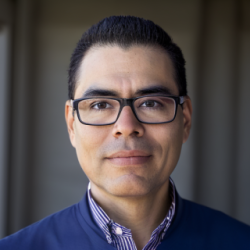I reach toward the sky as I inhale. It feels good. My body has been through a lot lately, and I have just been cleared by my obstetrician to resume physical activity after my C-section. I can feel my body stretching in a way it hasn’t in months as the yoga session progresses. This is good.
I didn’t sign up for this, didn’t seek it out. It was offered as a free session during an online virtual conference I attended as part of a “wellness” initiative. I’m not normally one for yoga — and this was nice — but as I basked in my gratitude over this session, I couldn’t help but ask myself how this actually made me more well as a physician. As a person, sure, one unplanned yoga session is one more than I would have done otherwise. But as a physician, I was unchanged. Even worse, I wondered, what message do sessions like this send our residents in training? Do we really want to be suggesting that the road to wellness as a physician is to spend less time actually being a physician? As a busy surgeon, I have always had the attitude that my own wellness is my own prerogative. I had never been to a wellness session of any kind until this yoga session. I have to say, my preconceived notions were right. It was exactly what I had expected — yoga. Was it “wellness?” I don’t think so.
It is no secret that there is a current burnout crisis holding the U.S. health care system hostage. Why aren’t we targeting the root causes of physician unwellness? Why aren’t wellness committees asking what is making most physicians unwell at work? What does it even mean to be unwell? Is it the same as being unhappy, frustrated, unappreciated? Unable to obtain the care that your patient needs?
In one hospital, “wellness” might mean hiring additional IT personnel so that issues with the EMR can be handled quickly and templates can be tailored to decrease the daily burden of documentation. In another setting, it might mean revising the sick-leave policy to ensure that physicians have the ability to stay home when they are ill. For some groups, it might mean protecting maternity leave or providing some backup child care at the hospital so that getting called in on call doesn’t leave a physician scrambling to arrange child care.
I know, personally, my top wellness issue at the start of the pandemic was concern about reliable access to PPE. Although my employer at the time tackled that issue well, I was at the mercy of the hospital system to decide what PPE would be available and how it would be distributed. Perhaps simply having a voice to express my concerns and fears could have enhanced my wellness through that difficult time. Now, I have less critical issues, but issues nonetheless. Why can’t “wellness” mean an EMR that allows you to change a note type from “consult” to “H&P” rather than having to create an entirely new note when a resident enters the wrong type? Why can’t “wellness” mean a merged directory and call-schedule system so that nurses call the appropriate available physician rather than one who is post-call and trying to sleep before another busy night?
I suppose there are tiers of wellness, some of which are under our personal control and some of which are not. For example, I cannot control the functionality of the EMR my hospital system chooses to use. Although I have tried every avenue known to me, I cannot control whether or not the nurses call me eight times during my 12 hours off between call shifts. I cannot control how many trauma alerts or emergency general surgery consults come in on any given day.
But there are some things I can control. I can control where I work and whom I work for. I can choose to work in a team that is adequately staffed for the occasional crazy night or one that is not. I can choose to work in a hospital group or a private practice setting. I can choose to live near or far from family. I can choose to work in a setting that provides some form of paid maternity leave or one that does not. This second tier is our domain.
Although it may take a lot to push someone far enough to level up and use these second tier powers, they are always within our reach. From the viewpoint of hospital administrators, it may appear cheapest to throw a few yoga sessions out like chum in the water, hoping that physicians will feel grateful and forget about their workplace frustrations, as they breathe in rhythm with other physicians as tired and burned out as themselves. However, if hospitals want to retain talented physicians, perhaps it’s worth rolling up their sleeves and investigating the small, fixable issues that irk us as we go about our days trying to take excellent care of our patients. Why is there “wellness” at all? Why not create a “physician advocacy” committee instead and focus on enabling physicians to reclaim the joy of the profession we all love?
As I ponder these issues, I exhale and shift out of warrior pose. I may not be able to fix what is broken on my own. But I can at least ask the questions.
What do you believe would most help improve physician wellness? Share your ideas in the comment section.
Dr. Danielle Pigneri is a Trauma and Acute Care Surgeon practicing in the Dallas-Fort Worth metroplex. When not working, she enjoys her other job, being a mom to two sweet young children. Dr. Pigneri is a 2022-2023 Doximity Op-Med Fellow.
Image by everything bagel / Getty







